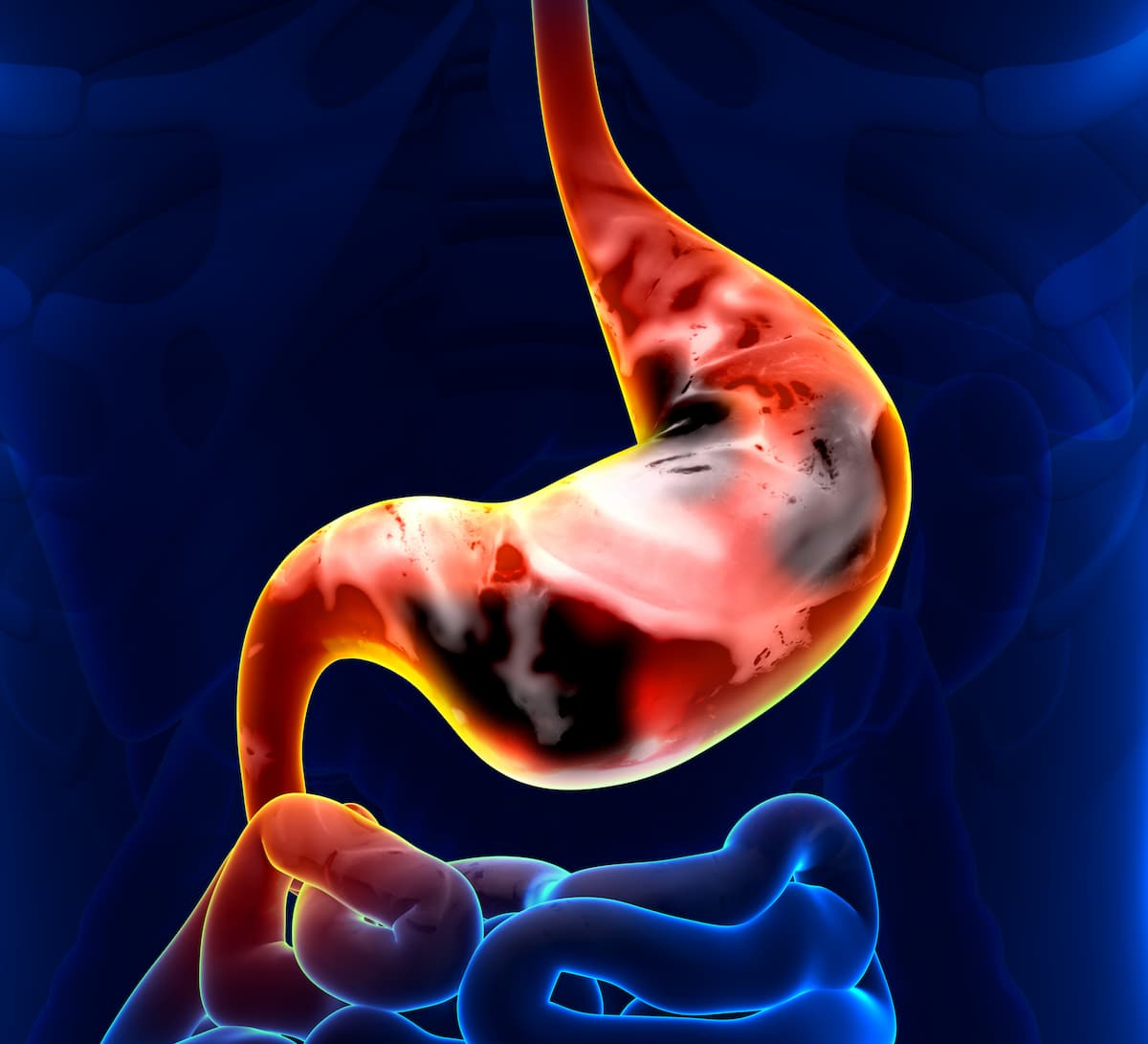TFOX Regimen Enhances Efficacy vs FOLFOX in HER2-Negative Gastric Cancer
The safety profile of TFOX was consistent with data reported in previous studies, and no new safety signals were identified.
After a median duration of follow-up of 42.8 months, the median PFS in the intention-to-treat population was 7.59 months in those treated with TFOX vs 5.98 months in those treated with FOLFOX.

A modified chemotherapy regimen consisting of docetaxel, folinic acid (leucovorin), oxaliplatin, and 5-fluorouracil (TFOX) showed enhanced progression-free survival (PFS) and overall survival (OS) outcomes and a greater number of objective responses vs leucovorin, oxaliplatin, and 5-fluorouracil (FOLFOX) in adult patients with HER2-negative advanced gastric and gastroesophageal junction (GEJ) adenocarcinoma, according to findings from the phase 3 PRODIGE 51-FFCD-GASTFOX trial (NCT03006432) published in Lancet Oncology.
After a median duration of follow-up of 42.8 months (IQR, 25.8-49.9), the median PFS in the intention-to-treat population was 7.59 months (95% CI, 7.06-7.95) in those treated with TFOX vs 5.98 months (95% CI, 5.65-6.97) in those treated with FOLFOX. Furthermore, a 12-month restricted mean survival time analysis showed a restricted mean PFS of 7.52 months (95% CI, 7.06-7.97) vs 6.62 months (95% CI, 6.16-7.09) in the respective groups (P = .007).
Median OS in the intention-to-treat TFOX and FOLFOX groups was 15.08 months (95% CI, 13.70-16.72) vs 12.65 months (95% CI, 10.94-14.00), with a proportional hazards assumption confirmed (HR, 0.82; 95% CI, 0.68-0.99; P = .048). Additionally, the 12-month OS rates were 59.65% (95% CI, 53.14%-65.57%) and 52.63% (95% CI, 46.13%-58.71%) in the respective arms. In a post hoc analysis, the 18-month OS rates were 39.53% (95% CI, 33.14%-45.83%) and 29.52% (95% CI, 23.80%-35.46%) in the TFOX and FOLFOX groups, respectively.
Subgroups in the intention-to-treat population showed that OS favored TFOX in patients younger than 70 years (HR, 0.76; 95% CI, 0.60-0.95), those with an ECOG performance status of 0 (HR, 0.65; 95% CI, 0.47-0.88), or those with diffuse histological subtype (HR, 0.59; 95% CI, 0.40-0.87) in exploratory subgroup analyses.
Objective response rates (ORRs) among patients with at least 1 measurable lesion were 62.3% (95% CI, 56.0%-68.3%) in the TFOX group and 53.4% (95% CI, 47.0%-59.8%) in the FOLFOX group (P = .045). Additionally, the disease control rate (DCR) in the respective arms was 86.9% (95% CI, 82.1%-90.8%) vs 77.7% (95% CI, 72.0%-82.8%; P = .0072).
“The modified FLOT [5-fluorouracil, oxaliplatin, and docetaxel]/TFOX regimen significantly improved [PFS], [OS], and [ORR] compared with FOLFOX.... The modified FLOT/TFOX regimen might represent a new therapeutic option for select patients not eligible for immune checkpoint inhibitors or targeted agents,” lead investigator Aziz Zaanan, MD, PhD, from the Department of Gastroenterology and Digestive Oncology at European Georges Pompidou Hospital, part of Assistance Publique Hôpitaux de Paris, affiliated with the University of Paris, wrote with study coauthors. “This docetaxel triplet chemotherapy deserves to be investigated in future trials encompassing PD-1 or claudin 18.2 inhibitors in biomarker-selected populations.”
The phase 3 PRODIGE 51-FFCD-GASTFOX trial randomly assigned patients 1:1 to receive either FOLFOX (n = 253) or TFOX (n = 254). FOLFOX treatment consisted of 400 mg/m2 of folinic acid, 85 mg/m2 of oxaliplatin, a 400-mg/m2 5-fluorouracil bolus, and then a 2400-mg/m2 continuous infusion of 5-fluorouracil over 46 hours, occurring every 2 weeks. TFOX treatment consisted of 50 mg/m2 of docetaxel, 400 mg/m2 of folinic acid, 85 mg/m2 of oxaliplatin, and then a 2400-mg/m2 continuous infusion of 5-fluorouracil over 46 hours. Treatment was administered intravenously for both regimens and persisted until disease progression, unacceptable toxicity, investigator decision, or patient withdrawal.
Patients assigned to the TFOX and FOLFOX regimens were mostly male (81% vs 77%), had an ECOG performance status of 1 (58% vs 57%), and had primary tumor locations in the GEJ (56% vs 57%). Additionally, a majority of patients in the respective arms did not have signet ring cell carcinoma (65% vs 65%), had an intestinal type of Lauren classification (51% vs 48%), and had metastases in the liver (54% vs 48%) and lymph nodes (51% vs 47%). Furthermore, 51% and 47% of the TFOX and FOLFOX arms had 2 or more organs with metastases and 4% vs 8% received previous neoadjuvant or adjuvant treatment.
The primary study end point was PFS. Secondary end points included OS and ORR.
Treatment-emergent adverse effects (TEAEs) occurred in 98% of the TFOX and 99% of the FOLFOX arms. The most common grade 3 or 4 TEAEs in each arm included peripheral neuropathy (32% vs 20%), neutropenia (27% vs 18%), fatigue (16% vs 8%), and diarrhea (15% vs 7%). Dose reductions occurred in 77% vs 65% of the respective arms, and serious treatment-related AEs occurred in 27% vs 13% of each arm, which were mainly related to gastrointestinal events.
Reference
Zaanan A, Bouché O, de la Fouchardière C, et al. TFOX versus FOLFOX in first-line treatment of patients with advanced HER2-negative gastric or gastro-oesophageal junction adenocarcinoma (PRODIGE 51- FFCD-GASTFOX): an open-label, multicentre, randomised, phase 3 trial. Lancet Oncol. Published online April 23, 2025. doi:10.1016/S1470-2045(25)00130-5